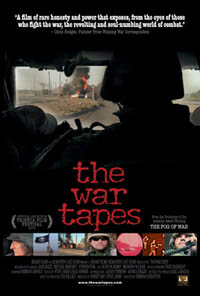
Our dear friend and artist in residence Alex Itin has been getting noticed of late. Yesterday he was profiled on The Daily Reel, a popular site that curates quality video from around the web and frequently features his work. Other interesting video sites have also been a-knockin’.
An even better meditation on Alex’s work is this comment posted by Sol Gaitan last month in response to his popular piece, “I Made Pictures of Making a Picture of Everyone Who Might Be Looking At These Pictures of Everyone” (a bona fide blockbuster on Vimeo). I’ve reproduced it in full:
Robert Rauschenberg’s fabulous exhibition of 43 transfer drawings at Jonathan O’Hara Gallery produce that feeling, in retrospective, of seeing something that is going to mean a lot in the future. And they did. Executed in the 60’s they were the precursors, as well as the result, of appropriation. Duchamp and Picasso are two obvious examples that come to mind when one thinks of the origins of appropriation, today we prefer the term “mash-up.” The exciting thing about Rauschenberg is his extraordinary use of the quotidian to create highly manipulated works that elude classification. As his combines include and exclude us, the transfer drawings leave us with a feeling of immediacy and at the same time of blurry memories.
Alex Itin’s play with appropriation produces the same feeling. He is doing something that is going to mean a lot. His investigations of the uses of technology to produce an art as dynamic as its medium, is evident in these “horizontal scrolls.” The medium is limiting, so Alex is searching for a way to blog that defies its verticality, very much along the lines of the Institute, where his art resides. There are extraordinarily beautiful artist homepages on the Internet, but Alex’s redefinition of the blog as a place of encounter, intentional or by chance, a place of fusion where he produces and manipulates his mash-ups is unprecedented. With this “horizontal scroll” he moves a very important step forward. He addresses us in all our anonymity while creating the piece in front of our very individual eyes. His use of the blog as a way of communication through live creation makes it burst along its seams.
The way Rauschenberg’s transfer drawings fall on the paper seems aleatory, but it responds to the limitations he found in both collage and monotype before he started his silkscreen explorations: “I felt I had to find a way to use collage in drawing to incorporate my own way of working on that intimate scale,” (as cited on the show’s catalogue by Lewis Kachur from art historian Roni Feinstein’s dissertation, NYU 1990.) The result are aerial collages of images transferred from newspaper that become a testimony of their times. The 60’s were charged times, and the newsprint chosen by Rauschenberg; the civil rights movement, Vietnam, the invasion of Czechoslovakia, astronauts, consumer products, address high modernism, while their heterogeneity alludes to the fragmentary condition of postmodernism. Alex’s depiction of those looking at his blog is highly charged in a similar manner; who are us anyway? What seems improvisation takes the form of social commentary, as he says on his blog:
who is my audience?… I think I’ll draw them and perform in front of the drawing. Today’s post also asks the question (more than most), which here is the real work of art? The drawing, or the film of the drawing, or the whole thing together on the blog, or what?
Rauschenberg’s masterful use of gouache, watercolor and ink washes lends coherence to the whole. It centers the viewers attention on image and text, fusing them. Their dynamism makes us think of the artist at work. Alex has the medium, and the shrewdness, to put both, process and work, in front of our eyes. The result is not the voyeuristic epiphany of seeing Pollock dripping paint on a canvas that would become the actual piece, here it is the artist at work, moving in precarious terrain, which IS the piece.
Rauschenberg’s pieces elude nomenclature, they are neither painting, nor collage, nor sculpture, they are thresholds to new forms of perception. Today’s challenge is to rethink the meaning of appropriation in a moment when capitalist commodity culture has become the determinant of our daily lives. To appropriate today is to expose the unresolved questions of a world shaped by the information era. Permanence is constantly challenged and the evolution of Alex Itin’s work on his blog shows this as clearly as it can be.




